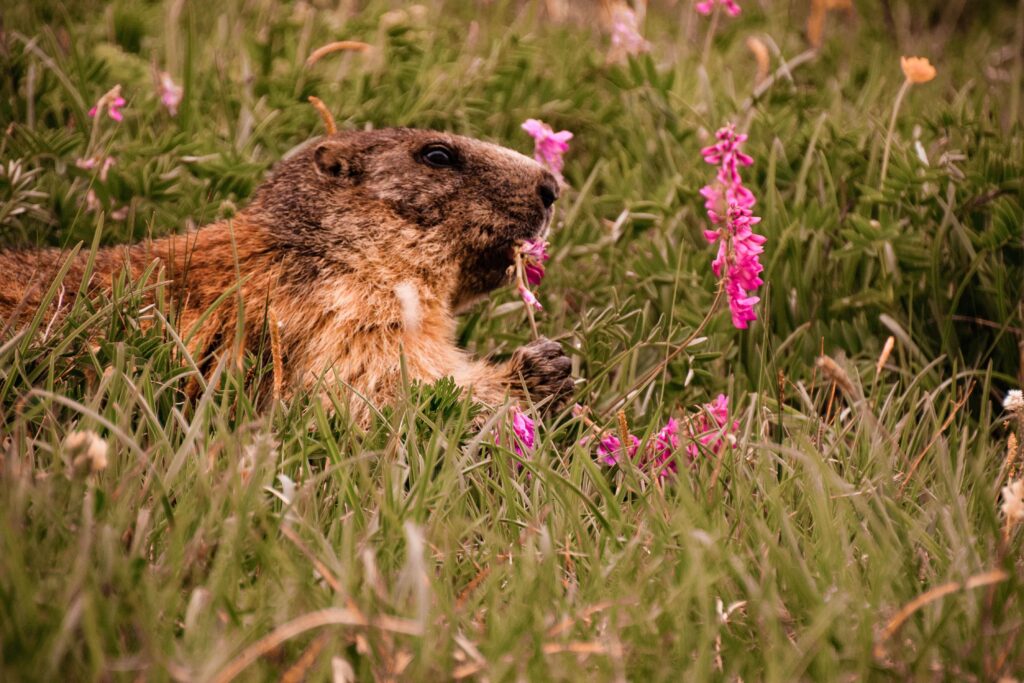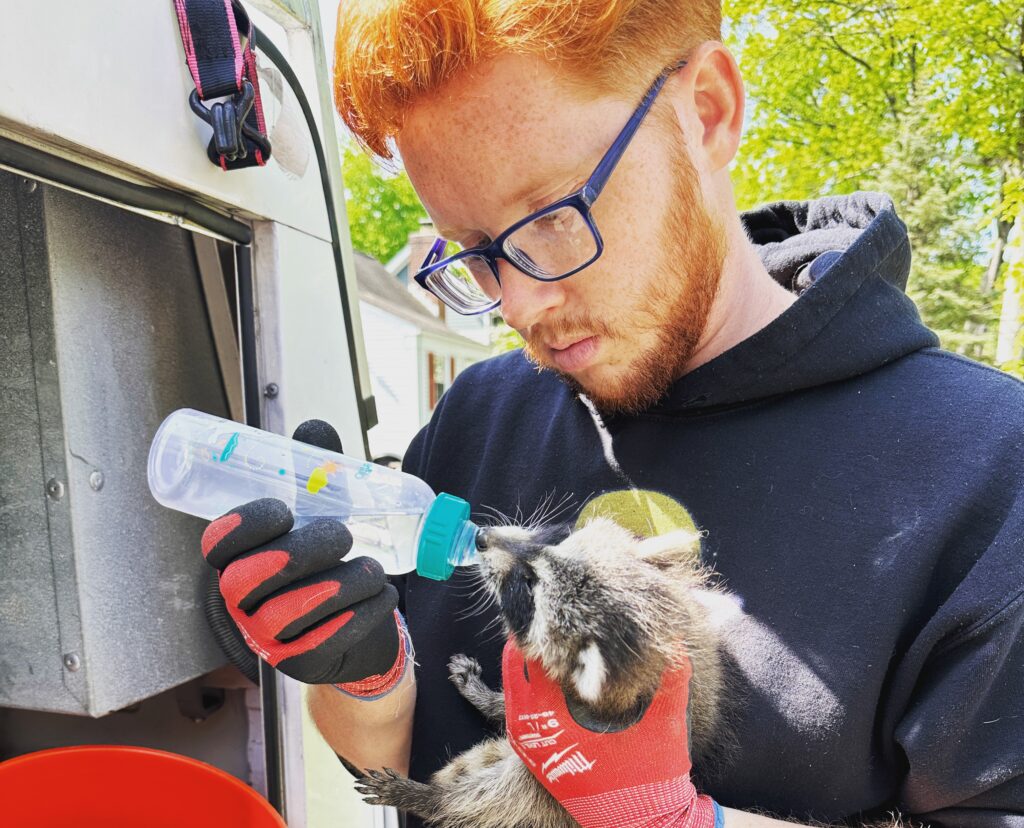As the charming landscape of New Jersey embraces the changing seasons, residents often find themselves sharing their outdoor spaces with a variety of wildlife. Among these inhabitants, the groundhog has gained notoriety for its burrowing tendencies and the occasional disruption it causes to gardens and lawns. If you’re grappling with groundhog troubles in the Garden State, fret not – you’re not alone in this endeavor. This article delves into the art of trapping groundhogs in NJ, offering insights into effective techniques that strike a balance between addressing the issue and maintaining a compassionate approach towards these furry neighbors.
Understanding the peculiarities of groundhog behavior is crucial in developing a successful trapping strategy. From their seasonal habits to the signs indicating their presence, gaining insight into their world sets the foundation for a more informed and targeted approach. Furthermore, navigating the legal landscape surrounding wildlife management in New Jersey is imperative. By adhering to regulations and obtaining the necessary permits, you not only ensure the legality of your efforts but also contribute to responsible wildlife control practices.
Stay tuned as we explore the nuances of trapping groundhogs in NJ, from choosing the right methods and baiting techniques to monitoring and long-term prevention strategies. In this comprehensive guide, we aim to equip you with the knowledge and tools needed to peacefully coexist with groundhogs while safeguarding your outdoor spaces.
Key Takeaways
- Grasp groundhog habits to enhance trapping precision.
- Secure permits, follow regulations for ethical and lawful trapping practices.
- Position traps strategically in high-traffic areas for heightened efficacy.
- Employ fresh fruits and vegetables as bait for irresistible allure and successful captures.
- Regularly monitor traps, adapting strategies for humane, effective, and responsible groundhog trapping.
Understanding Groundhog Behavior
To successfully navigate the endeavor of trapping groundhogs in NJ, a fundamental grasp of groundhog behavior is indispensable. Groundhogs, also known as woodchucks, are active burrowers with distinct seasonal habits. Understanding these patterns is pivotal in devising an effective trapping strategy tailored to New Jersey’s unique environmental conditions.
Groundhogs exhibit heightened activity during the spring and summer months when they focus on foraging, mating, and digging burrows for shelter. Identifying signs of their presence, such as fresh mounds of dirt around burrow entrances and chewed vegetation, aids in pinpointing areas of high groundhog activity. Moreover, recognizing their propensity to establish burrows near gardens and structures is essential for strategic trap placement.
Groundhogs are more than just occasional garden invaders; they play a crucial role in local ecosystems. Their burrows serve as habitats for various species, and understanding their behavior helps strike a balance between effective trapping and respecting their role in nature. Stay tuned as we delve deeper into the intricate world of groundhog behavior, guiding you towards a more nuanced approach to trapping in the diverse landscape of New Jersey.
Choosing the Right Trapping Method
In the pursuit of trapping groundhogs in NJ, the choice of trapping method holds significant importance. The Garden State presents a diverse landscape, requiring a thoughtful approach to groundhog management. One must weigh the pros and cons of different trapping techniques to ensure both efficacy and humane treatment of these creatures.
Live trapping and lethal methods are two primary approaches, each with its own considerations. Live trapping involves capturing groundhogs in a humane manner, allowing for their relocation. This method aligns with ethical wildlife management practices and is often favored by those seeking a non-lethal resolution to groundhog troubles. However, relocation may pose challenges due to potential territorial issues and the stress it imposes on the animals.
On the other hand, lethal methods involve directly addressing the groundhog population on your property. While this approach may be more immediate, it requires careful consideration of local regulations to ensure compliance. Striking a balance between effectiveness and ethical considerations is paramount when choosing the right trapping method in the context of New Jersey’s diverse ecological landscape. Stay tuned as we explore these nuances further, guiding you toward a well-informed decision for managing groundhog-related challenges in the Garden State.

Locating Problem Areas
Successfully trapping groundhogs in NJ begins with a thorough assessment of your property to identify problem areas. Groundhogs are resourceful creatures, and understanding their behavior helps pinpoint locations where they are likely to cause disruptions. Begin by surveying your surroundings, paying close attention to signs of groundhog activity.
Fresh mounds of dirt around burrow entrances are telltale signs that groundhogs have established their presence. These burrows, often located near structures or gardens, serve as the epicenter of their activities. Take note of chewed vegetation, as groundhogs are herbivores and can significantly impact gardens and landscaping.
Strategically placing traps in areas of high groundhog traffic is crucial for successful trapping. By observing their behavior and identifying the primary entry points to their burrows, you enhance the chances of capturing the targeted individuals. Regular patrols around your property and a keen eye for subtle signs contribute to a more effective trapping strategy tailored to the specific challenges posed by groundhogs in the diverse landscapes of New Jersey. Stay tuned as we delve deeper into the intricacies of groundhog trapping, guiding you toward a more nuanced and strategic approach to managing groundhog-related issues on your property.
Baiting Techniques
When it comes to trapping groundhogs in NJ, employing effective baiting techniques is a key element of a successful strategy. Groundhogs are herbivores, and their dietary preferences can be leveraged to entice them into traps. Understanding their natural food sources and preferences is crucial for selecting bait that is appealing and effective.
Groundhogs have a penchant for fresh vegetation, including fruits, vegetables, and leafy greens. Utilizing these food items as bait can be highly successful. In the Garden State, where agriculture is prevalent, incorporating local produce can be a strategic choice. Sweet fruits like apples or succulent vegetables such as carrots can serve as enticing bait options.
Additionally, enhancing the allure of the bait by placing it strategically around the trap can increase the likelihood of a groundhog entering. Placing bait near the entrance of burrows or along well-traveled paths can make the trap more appealing. As we delve deeper into the art of trapping groundhogs, we will explore these baiting techniques in more detail, providing you with insights into creating an enticing and effective trapping setup on your New Jersey property.
Monitoring and Responsiveness
Once you’ve initiated the process of trapping groundhogs in NJ, continuous monitoring and prompt responsiveness are crucial elements for a successful outcome. Regular checks of your traps are essential not only to ensure the humane treatment of captured groundhogs but also to adjust your strategy based on the evolving situation.
Frequent inspections of traps allow you to promptly address any challenges that may arise. It’s important to monitor for unintended captures of non-target species and take immediate action to release them unharmed. Additionally, checking traps regularly reduces the stress on captured groundhogs and contributes to a more humane trapping process.
Responsiveness extends beyond trap checks. If a groundhog is captured, carefully and calmly attend to the situation. Understand the proper procedures for releasing or humanely dealing with the captured animal. Being prepared to adapt your strategy based on the outcomes of your monitoring efforts is a key aspect of responsible groundhog trapping in the dynamic landscape of New Jersey.
FAQs
How can I tell if I have groundhogs on my property?
Look for signs such as fresh mounds of dirt near burrow entrances, chewed vegetation, and well-defined paths. Groundhogs are most active during the spring and summer months.
Is trapping groundhogs legal in New Jersey?
Yes, trapping groundhogs in New Jersey is legal, but it’s essential to obtain the necessary permits and adhere to local regulations. Familiarize yourself with the guidelines to ensure compliance.
What bait is most effective for trapping groundhogs?
Groundhogs are herbivores, so fresh fruits like apples or vegetables such as carrots are enticing bait options. Local produce can also be strategically used to attract them to traps.
Can I relocate trapped groundhogs?
While live trapping is a humane option, relocating groundhogs may pose challenges due to territorial issues and stress. Check local regulations, and if relocation is not feasible, consider other responsible methods.
How often should I check my groundhog traps?
Regular trap checks are crucial to ensure the well-being of captured groundhogs and address any unintended captures promptly. Check traps at least once a day.
Conclusion
In conclusion, mastering the art of trapping groundhogs in NJ involves a delicate balance of understanding their behavior, adhering to legal considerations, and implementing effective trapping methods. New Jersey’s diverse landscape demands a nuanced approach, considering the unique challenges presented by groundhog activity.
Continuous monitoring and prompt responsiveness further enhance the efficacy and humane nature of your trapping efforts. Regular checks, coupled with a thoughtful strategy adjustment based on outcomes, ensure a more successful and compassionate approach to groundhog management.
If you find yourself facing persistent groundhog issues and require professional assistance, consider reaching out to experts who specialize in humane wildlife control. Call Kritter Catchers now at +1-877-468-5748 to benefit from their expertise and ensure a harmonious coexistence with groundhogs on your New Jersey property. With the right knowledge and practices, you can strike a balance between safeguarding your space and respecting the natural rhythms of the wildlife around you.


